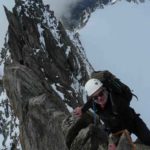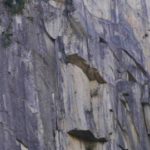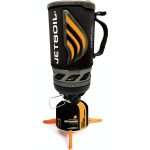Its no secret, the ski resorts are busy. The lift lines are long, the chairlift is cold and the fresh tracks don't last as long as they used to.
I will let you in on a secret, the ski resorts comprise of less than 0.01% percent of mountains to ski on, and that just around Whistler. The world over, there are endless mountains ranges to explore and multiple lifetimes of fresh tracks to be had. You just need to know how to backcountry ski.
Option A

Option B

Step 1 - People and Places
The thing about going into the backcountry is you need to have partners to keep you safe in case something ever happens. This might seem obvious, but you need "backcountry" terrain. The backside of Rabbit hill in Edmonton isn't really going to cut it.
- Recruit your friends to get into the sport with you. Easier to create custom ski touring course, better group dynamics and probably more fun!
- Join a ski club like the ACC or BCMC
- Take an open group course like AST 1 or Intro to ski touring.

Step 2 - Take a course
Serious, if you want to learn how to backcountry ski, and be able to maximize your time out there take a course or multiple!!! Do some pre-reading and decided what you want to focus on and make a plan to tackle those skills.
Some skills to learn
- How to use backcountry ski gear or split board.
- Companion Rescue (avalanche rescue)
- Wilderness First Aid
- How to powder ski
- How to identify avalanche terrain and how to avoid it.
- How to read your local avalanche bulletin and apply it to the terrain.
- Where to find the best snow after a storm or sunny period
- What additional gear you need to bring into the backcountry
All these skills can be learned in our AST 1 or Intro Ski Touring course. Or make a private course!

Step 3 - Get the gear
More gear!!! Yes, you will need to get new skis, bindings, and boots!
Skis - Backcountry touring skis are generally the same as a powder "on-piste" ski just build lighter to help you when walking uphill. I recommend looking for a ski that is 95cm to 115cm underfoot depending on where you ski (how much fresh snow you get). The shape depends on the style of skier you are, if you are new to powder skiing get something that has an early rise tip or reverse camber, will make your life easier learning to slay the pow.
- 95 - 115cm width underfoot
- Early rise tip
- Flat tail (for the skin attachment)
My quiver includes: Black crows Anima Freebird 112 and Camox Freebird 96
Bindings - For backcountry skiing there are two options for bindings: Lightweight Pin bindings or DIN step in bindings with tour mode.
Pin bindings are dedicated for touring, they are light, and they have a more natural feel when touring. If you are using the binding for primarily touring this would be the best option. Pin bindings are limited when on piste, they have a bit more lateral play and can pre-release if you hit an ice patch or stomp a jump. Pin binding also, unfortunately, have been blamed for a tib-fib fracture where the toe piece doesn't release causing the lower leg to spiral
DIN bindings are much heavier and with the front pivot point being a distance from the toe of the boot the walk can feel a bit strange a first. However, they fell like a normal ski binding, more predictable release, which can be safer for you legs/knee and also give you more confidence when ripping past people on the slopes.
My picks: Dynafit superlight for my light touring set up. And for the fat (ter) skis Salmon shift's which are a nice compromise between a pin and a DIN binding or the classic Dynafit ST Rotation 12
Boots - Similar to binding the big choice is weight and ease of walking or ski ability because its tough to have them all. If you are mainly skiing on piste with the odd tour a traditional boot design with walk mode will work. If you are doing more touring than hill laps a modern touring boot would be the choice.
Primarily Touring boots: These are lighter, have more cuff rotation and are pin binding compatible.
On-piste/tour boots: Stiffer with a better flex pattern than a touring boot, less cuff rotation and may or may not be PIN compatible. Remember the binding section, make your boot match your bindings.
In the boot closet: Dynafit Hojis! and the Lange XT free 130

Step 4 - Go skiing!
One of the biggest lessons I keep learning, even after 19 years of doing it, there is never a bad day on the mountain. Get out touring, regardless if its conditions are good or horrible. You won't regret it.






